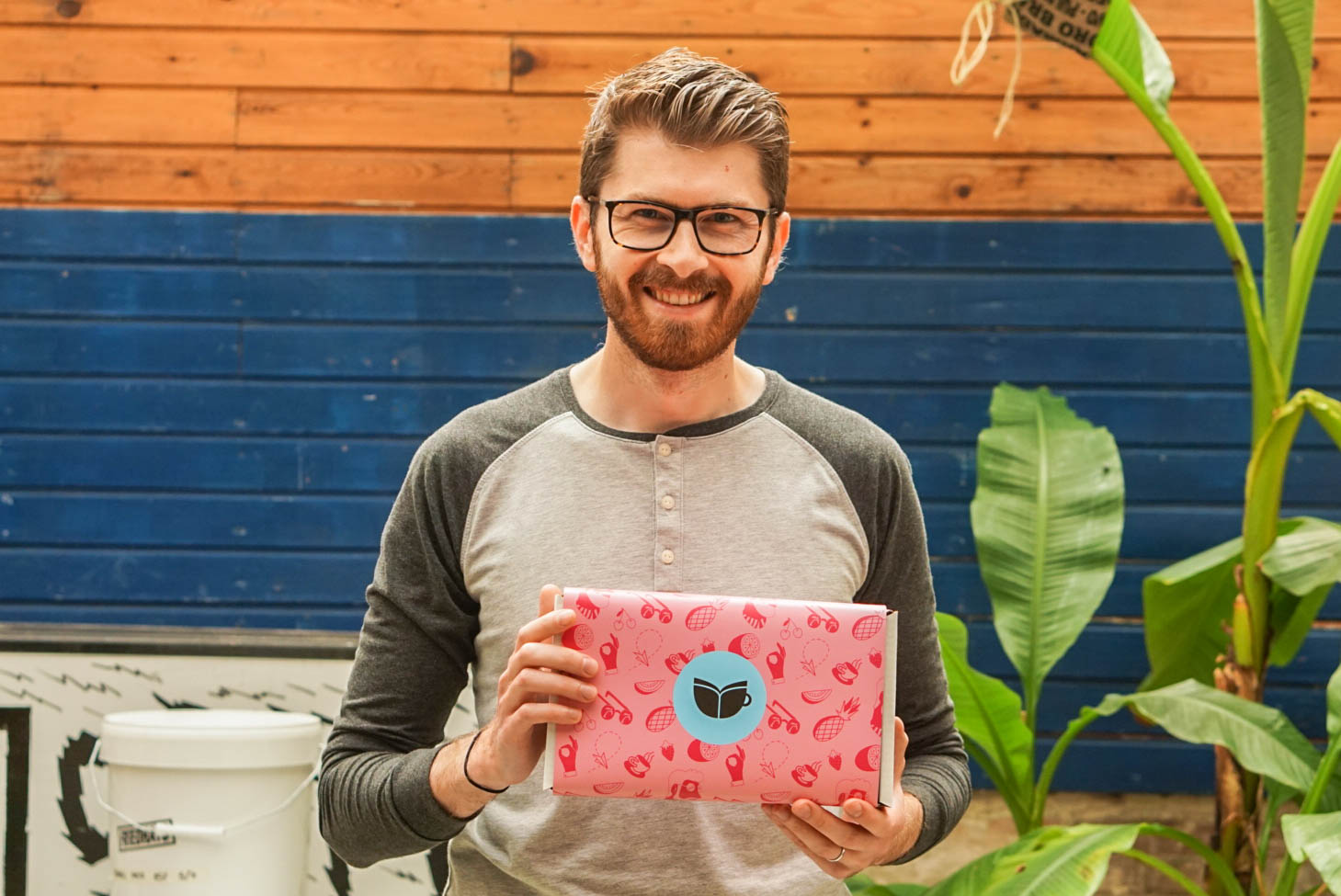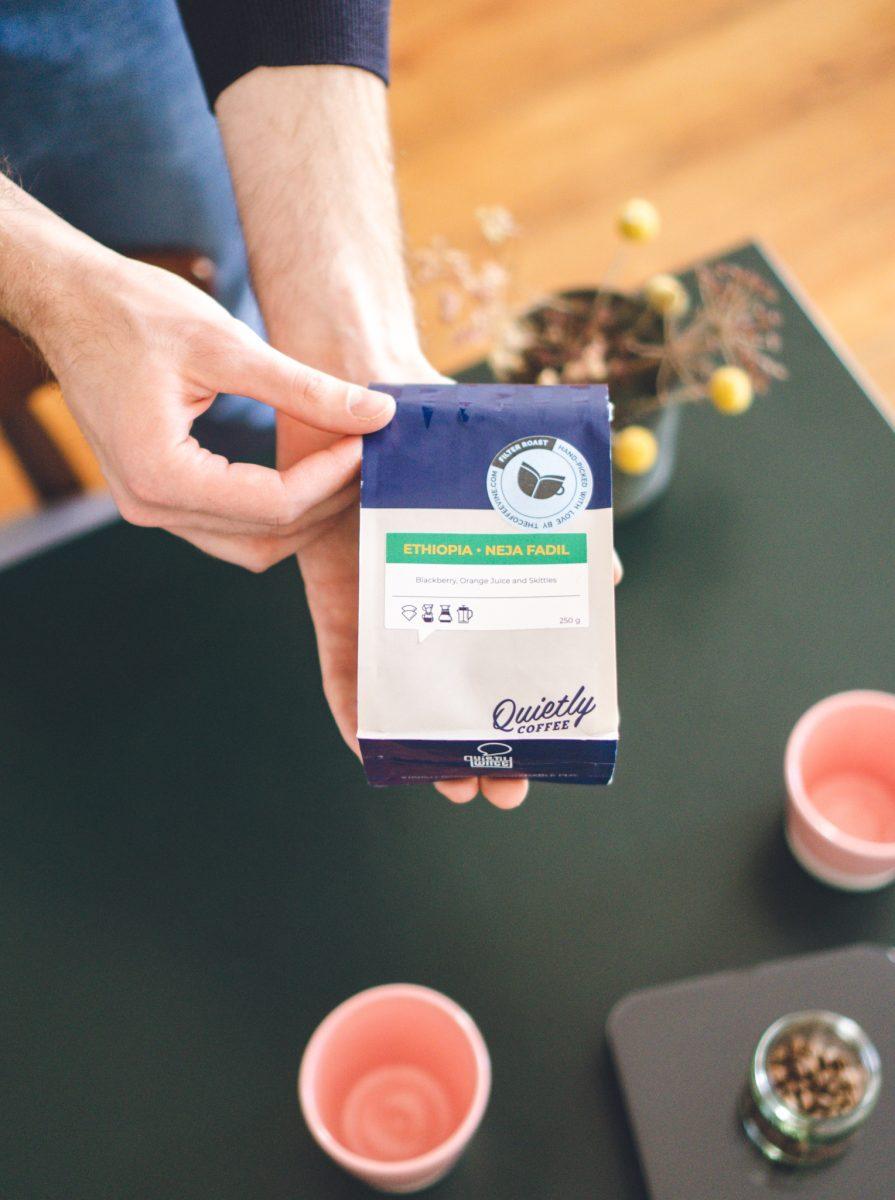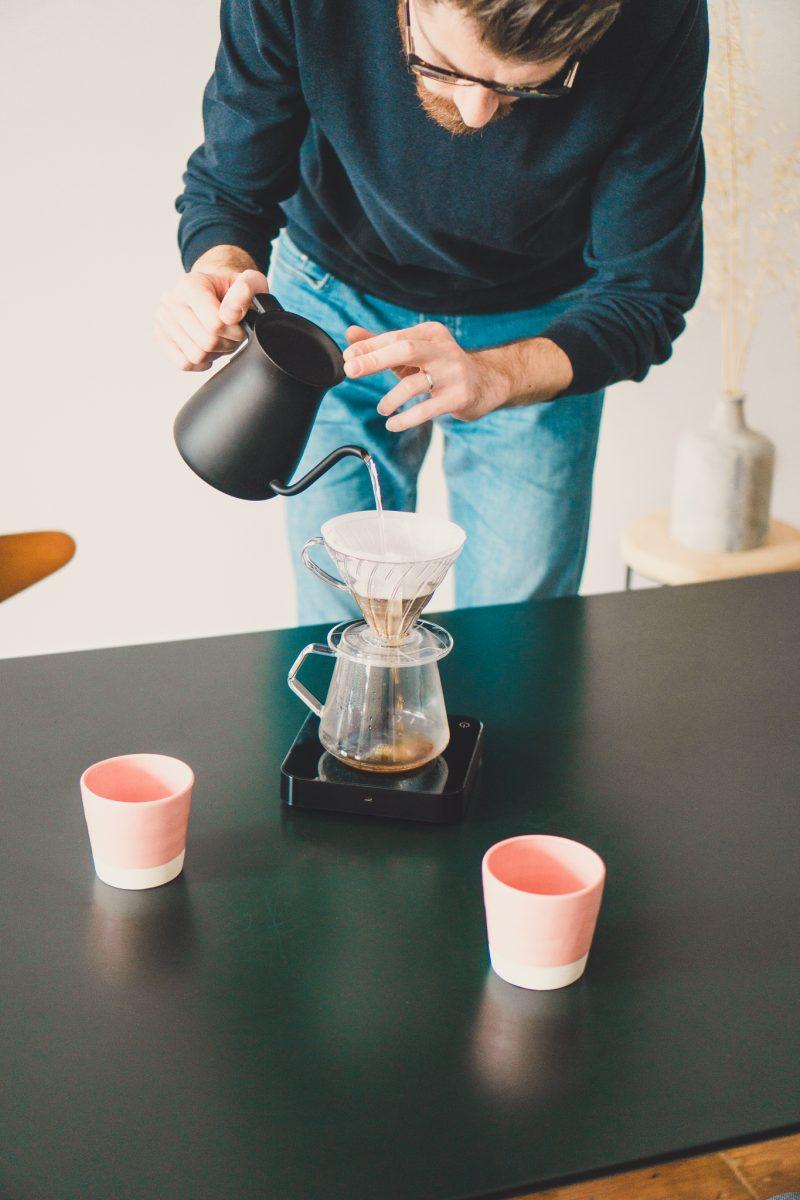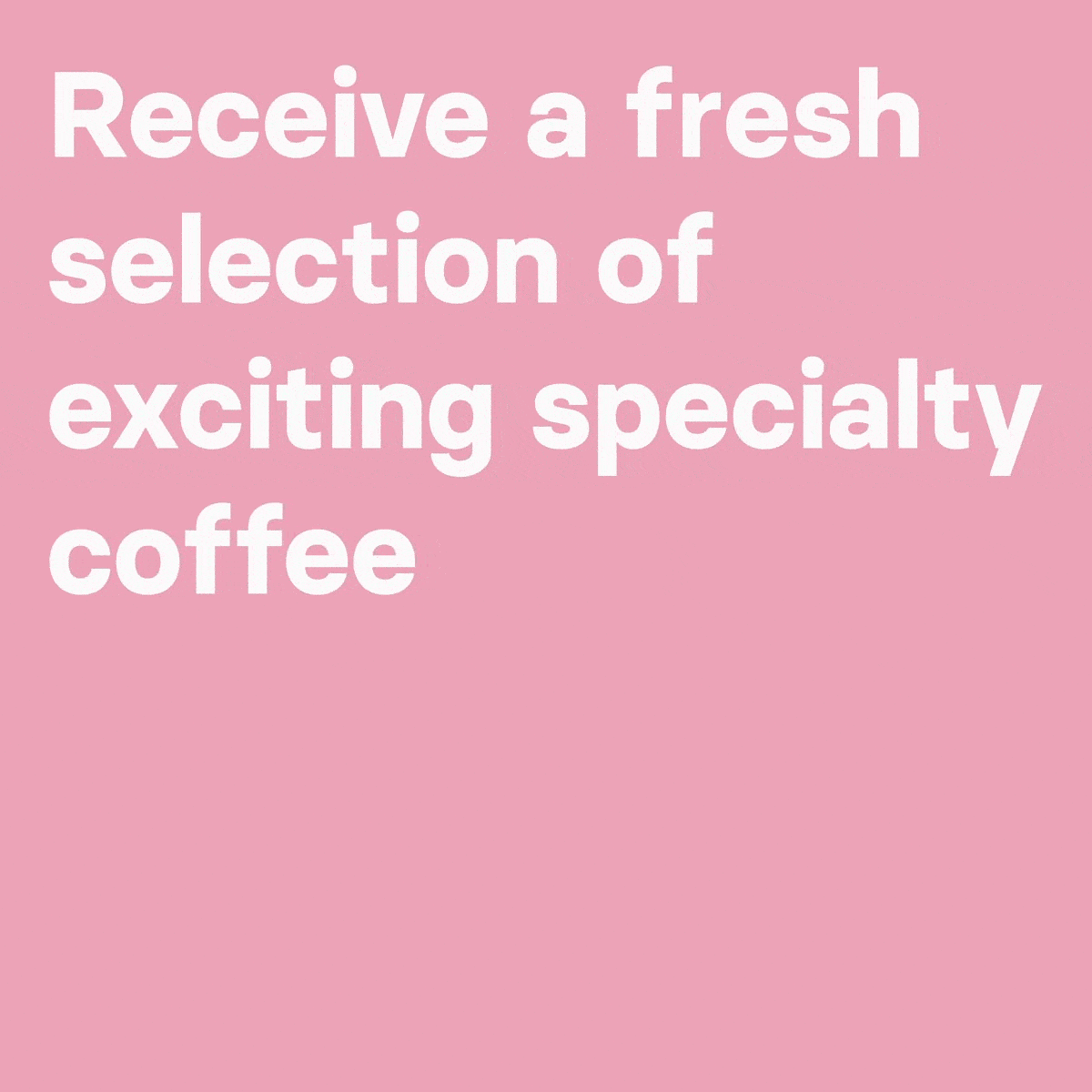Over the years, I have been able to build wonderful friendships and relationships with a myriad of coffee people from all corners of the world.
From Amsterdam to Melbourne and Oaxaca to Tokyo. The global coffee community is a truly unique one and I’m thrilled to be a part of it.
In 2019, I invited a group of hand-picked coffee aficionados to join the Coffeevine diplomatic corps and help us tell our story with beautiful content about every Coffeevine edition that we put together. Most of them are in Europe with a two located in other continents and one who also calls Amsterdam his home.
Dani Bordiniuc is a well-known face in the local coffee scene who I first met when he applied to be the first and only intern that The Coffeevine has ever had. For a few months in 2018, Dani played an indespensible role in our small company and even saved us from total collapse when one of the coffees for our August ’18 edition got stuck in customs and I had already left to go to Burning Man where I was disconnected from the world for 6 days.
As you can imagine, when I finally had signal, the first thing I needed to know was ‘Do we still have a business?’. Thankfully, Dani mastered this crisis with organisational verve and that alone made him my hero forever.
Since then, he’s moved on to become the store manager and head barista at Lot Sixty One’s legendary Kinkerstraat café in Amsterdam and continues to create wonder posts and stories with the coffees from our boxes.
A little while ago, I caught up with him at Rum Baba’s new café on the Elandsgracht.

Alex Kitain: “Ok. How much coffee did you have yesterday?”
Dani Bordiniuc: “Well, let me think. I had two pour-overs at home. One I shared with Bianca (his wife) and one I had by myself. And then I met with Farrah Tan and her boyfriend Rick who were preparing for the Dutch Barista Championships and Brewer’s Cup Championships and who served me several espressos. We only started at 7 pm or so.
AK: “So by the time you got home you were buzzing like an electric eel, basically.”
DB: “I was extremely focussed and very tired at the same time. It’s a weird feeling, haha.”
AK: “I guess as a barista that is not terribly unsual for you.”
DB: “I really love dialling in the espresso in the morning and tasting our filter coffees but you have to be carefully you don’t have too much early on or you’ll crash right after lunch and then, it’s going to be impossible to come back up.”
AK: “Now, take me back to that first cup of specialty coffee you ever had. How did it impact you?”
DB: “Hm. That’s a good one. Hm. [long pause]. So for me it was actually a bit different. It was noticing how the flavour profile of a cup of coffee changed as it cooled down that made me want to learn more about specialty coffee and start brewing at home.
It was in actually at Stockholm Espresso Club in Hamburg where they only serve Koppi. When I was there, it was quite empty and the barista had a bit of time on his hands to show me how he was brewing the coffee, a Costa Rican coffee if I remember correctly, and I found it fascinating how the taste continued to change over time.
That was such a good cup of coffee that it made want to become a home brewer.
AK: “And then, when you got back to Amsterdam you basically launched your home brewing career?
DB: “Exactly. I did some research to find out what I needed and got myself a set of Brewista scales and a Brewista kettle, a V60 server and plastic dripper. I actually had a ceramic one before but I like to brew coffee when I’m travelling and the plastic one is more durable. What’s more, it doesn’t affect the brewing temperature quite as much as the ceramic one. And, I got a Porlex grinder, which I still have but don’t use anymore ever since I treated myself to a Comandante Grinder.

AK: “Of course, seeing where you are today, you took your new passion to the next level by pursuing a professional career in coffee. Tell me what motivated you to do that.”
DB: “It’s never an easy decision to leave a well-paid job in corporate to pursue something different, right? While I was still in my last job, I travelled a lot around Europe and got a chance to seek out all the nice coffee bars where I was and interact with the local baristas.
But, to be honest, it wasn’t until I went on an origin trip to Colombia that I reached the point of no return. It was quite an emotional experience too. Being so close to the source, sleeping at the farm and picking my own coffees. It made me see coffee in a completely different light.
I knew that if I wanted to fully understand why a given coffee tasted in a certain way and so on, I would have to start from square one and become a barista.
When I was in corporate, I was in marketing and data analysis, something I found interested but, at the same time, something that didn’t really have much life. As a child, I often went to the countryside where the grow fruit and vegetables and being in Colombia offered me a whole new way to connect with coffee.
AK: “One of your first jobs after that trip was, of course, your internship at The Coffeevine. Describe your journey since then.”
DB: “Yes. The Coffeevine was the first place I worked at post corporate. And after that, I had a few different jobs here and there. I was always able to pick up some new skills or bits of knowledge wherever I was and when I got to the point that I no longer felt challenged, I moved on.
That’s how I ended up at Lot Sixty One where I’ve now been for, gosh, one and half years.”
AK: “What’s been your biggest revelation about the coffee industry ever since you started working in it?”
DB: “For me, it’s the realisation that there is just such a big gap between what we know as coffee professionals and what the everyday coffee drinker knows. But also, that there’s a really big window of opportunity to engage with consumers, teach them different things about coffee and wean them off the idea that coffee is just another commodity.
It’s our job to help them understand why different coffees taste differently, why there is a difference between a filter and an espresso roast and how you can brew better coffee at home. I was really surprised by how little most customers know.
But, on the other hand, how amazing is it when you see a customer of yours gradually developing their taste preferences from a relatively standard nutty coffee to a fruit and vibrant one?”

AK: “But isn’t that exactly where the problem lies? When you work in a busy café like Lot Sixty One where it’s very crowded and you are busy processing orders, do you even have the time to really have a proper conversation with every customer?”
DB: “We always try to have a proper chat with everyone and provide any information they might need. It is challenging but it is our job to advise them and we can do small things like arranging our coffee shelf in such a way that they can easily navigate the profiles.
We also use social media a lot to share information, for example. During the week it’s manageable and even at certain times during the weekend, I can find the time to have a proper conversation with our customers.”
AK: “You’ve had a lot of personal growth opportunities at Lot Sixty One. You’ve done some trainings in the Middle East, you had a go at roasting. What is your personal goal for 2020? What do you hope to become better at this year?”
DB: “That’s a very good question. Firstly, I really want to continue sharing my brewing stories via Instagram and continue exploring different coffees from different roasters and origin countries and maybe share my knowledge via events where people can ask questions and get involved in the process itself.
And secondly, I want to improve my sensory skills. I’ve been lucky enough to work in a really busy business where I’ve had the chance to work on many different areas at the same time and going forward, I want to try and become a certified Q grader in the coming two years. In particular, I want to be able to identify the root cause when a certain coffee doesn’t taste as it should. Is it due to a processing defect or poor roasting skills?
In the future, it would be amazing if I could also work in green buying and travel to origin countries to pick the coffees or simply being able to choose the best tasting coffees out of a range of different potential options that green coffee importers have on offer. I think that is a really crucial skill.”
AK: “We now go back almost two years and a lot has changed at The Coffeevine in that time, of course. I would love to know what you think has been our coffee box’s biggest added value to your coffee brewing experience and maybe if you recall, which coffee was your favourite?”
DB: “Oh wow. The last part of that question will be tough to answer. Let me get out my phone because there have been so many amazing coffees and it would be unfair to leave some coffees out that really deserve a shoutout.
But the way it [The Coffeevine] impacted me most of all was that it exposed me to a lot of roasters who I had never heard of before. There are, of course, a lot of big and very established roasters out there who most people will know and then you have a lot of small micro-roasters who have only been around for a short time and they are all doing an amazing job.
“It wasn’t until I went on an origin trip to Colombia that I reached the point of no return”
The Coffeevine is a launching pad for many of them, even if you live in the same country as the roaster, you might never have heard of them before. One example is Puchero from Spain. You might live in Barcelona but have never heard of them before and this way, you get to expand your horizon.
I get a chance to share the coffees I get with my colleagues and we use them to see what other roasters are up to.
One of the best coffees I’ve had from The Coffeevine definitely was the recent El Salvador from Keen Coffee and while I was drinking that coffee, I was reading the book by Sasa Sestic who was at that farm, Los Pirineos. That was pretty cool.
Also, the coffee from Black in Bratislava was really something else. And the Colombian coffee from CleverCoffee. A real standout for me.”
AK: “As a final question, if you were to go back to square one, what would you do differently as a starting home brewer, if anything?”
DB: “I think it’s important to always have an open mind and take things that you hear with a pinch of salt. There are, of course, many people out there who have a lot of authority, who have written books and who have YouTube channels and so on but you should always consult different sources instead of just believing one thing and taking that as your law.
Every home brew should start and experiment and see what they personally like. There is no one-size-fits-all in coffee.
AK: “Thank you, Dani.”
Here’s Dani’s recipe for making a delicious cup of coffee.
My current recipe is 25 grams coffee (medium-coarse on Comandante), 375 grams water at 96ºC. Bloom with 75 grams of water, stir and wait 30 seconds. Use the rest of the water in consecutive pours. First up to 150 grams, then up to 225 grams, then up to 300 grams and finally, up to 375 grams.
Total draw-down time no more than 3 minutes and 30 seconds.
Follow @brewingwithdani and his wife @bianca.alexiuc on Instagram to keep up to date with all his coffee stories, book his home espresso workshops and to check out her photography.










